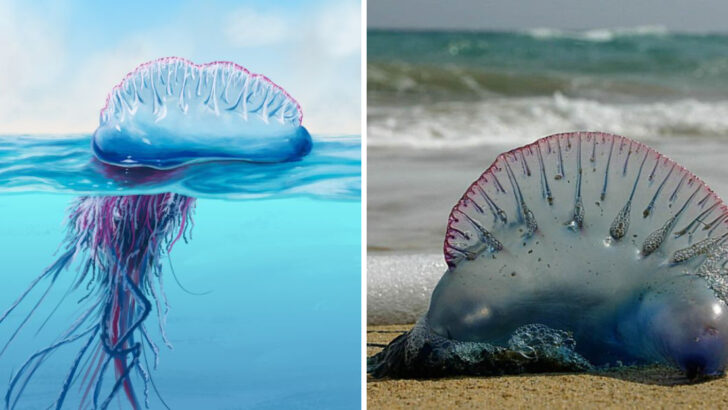The Portuguese Man o’ War, often mistaken for a jellyfish, is a mesmerizing marine organism that captivates with its beauty and intrigues with its deadly capabilities.
This fascinating creature is unique not only in appearance but also in its complex biological structure and behavior.
Unlike any other, the Portuguese Man o’ War is composed of a colony of specialized polyps that function together as one.
Its venomous tentacles can cause excruciating pain, making it both feared and revered. In this blog post, we explore ten extraordinary facts about this enigmatic ocean dweller.
Polymorphic Colony
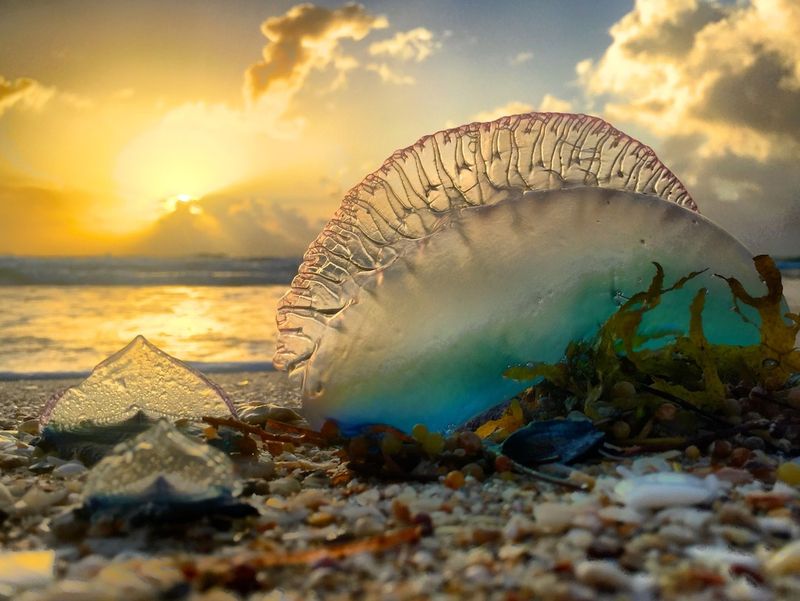
The Portuguese Man o’ War is not a single creature but a complex colony of specialized polyps. Each polyp has its distinct role, contributing to the survival of the whole.
The float, or pneumatophore, keeps it buoyant, while the tentacles capture prey. This polymorphic nature sets it apart from most marine life.
Did you know? Despite often being called a jellyfish, it belongs to the siphonophore family. This intricate structure allows for complex interactions with its environment, making it a fascinating subject of study in marine biology.
Venomous Tentacles
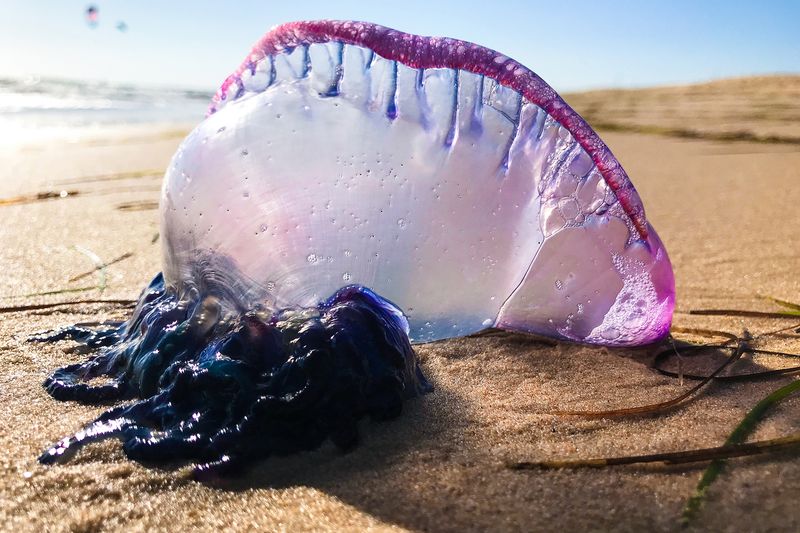
The tentacles of the Portuguese Man o’ War can stretch up to 165 feet, armed with venomous nematocysts.
Their sting is notorious for causing intense pain and can even be fatal to small marine animals. This defense mechanism ensures both protection and successful hunting. Interestingly, these tentacles can still sting even if detached from the body.
Known for their iridescent beauty, the tentacles are a visual marvel. Such a deadly adaptation highlights the man o’ war’s unique position in the ocean’s food chain.
Dazzling Appearance
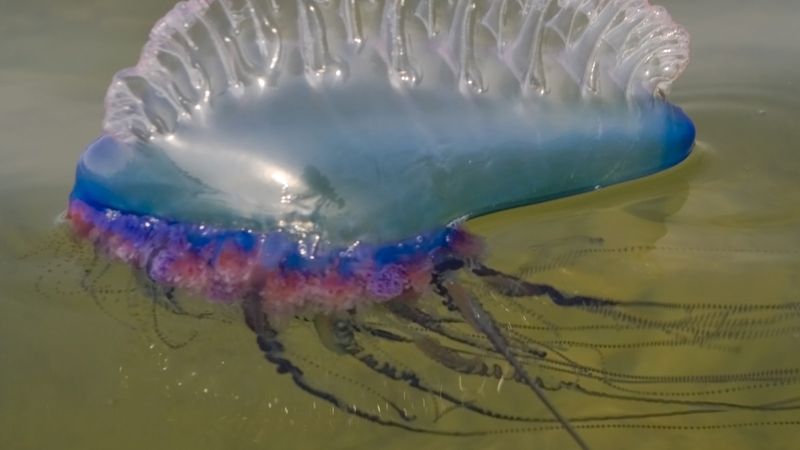
With its vibrant blue and purple hues, the Portuguese Man o’ War is a sight to behold. The gas-filled bladder, sitting atop the water, shimmers in the sunlight, creating a dazzling display.
This vivid coloration is more than just pleasing to the eye; it serves as a warning to potential predators. The allure of its appearance often leads to mistaken identities with harmless jellyfish.
This alluring beauty, paired with its deadly nature, makes the man o’ war a truly extraordinary creature of the sea.
Wind-Driven Drifter
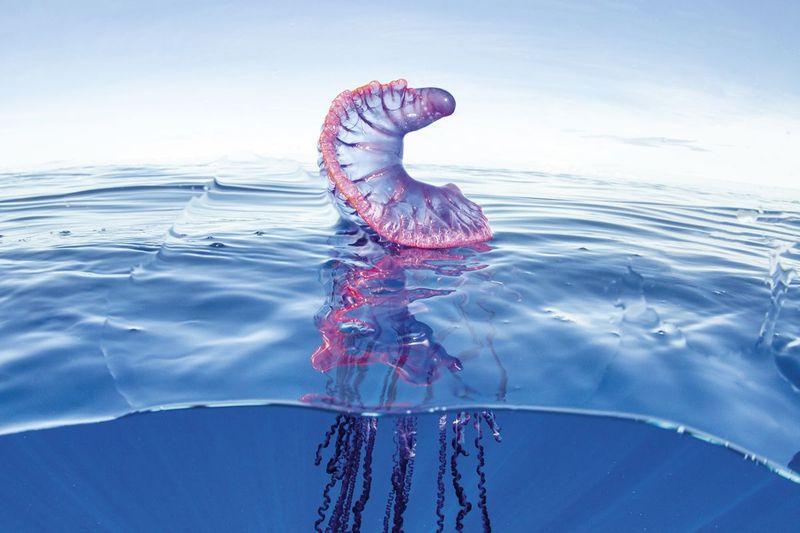
Unlike many marine animals, the Portuguese Man o’ War cannot swim. Instead, it relies on the wind and ocean currents for movement.
This drifting lifestyle makes it a nomad of the seas, traveling vast distances. Its sail-like crest is perfectly adapted to catch the wind, guiding its journey across the ocean. However, this passive movement means it’s often washed ashore, causing beachgoers to be wary.
This unique mode of travel is both a strength and vulnerability, illustrating the delicate balance of ocean life.
Predatory Behavior
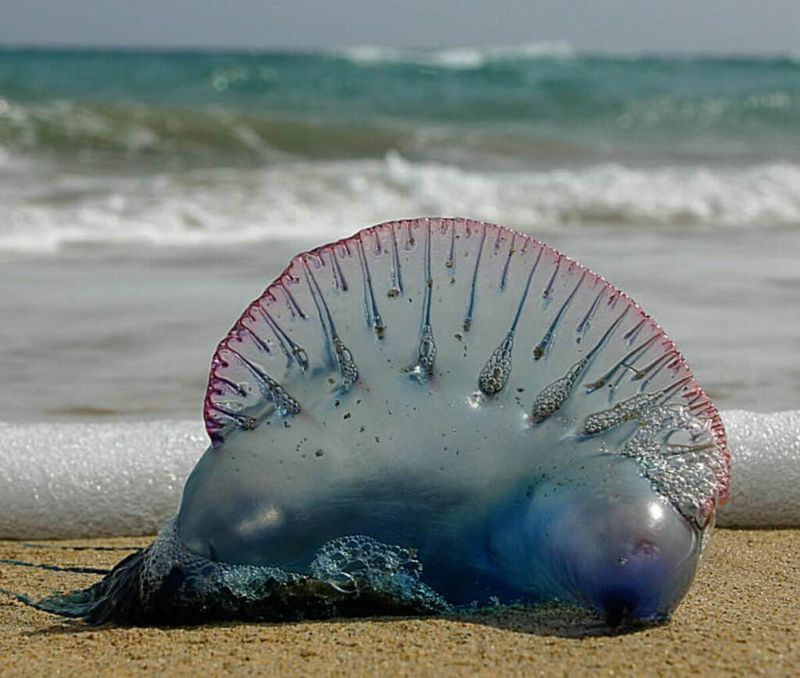
A master of ambush, the Portuguese Man o’ War uses its long tentacles to ensnare unsuspecting prey. Fish and small marine creatures fall victim to its deadly embrace, paralyzed by venom.
This predatory behavior is essential for its survival, converting prey into nutrition for the colony. Its ability to incapacitate larger fish showcases the potency of its venom.
This aggressive hunting strategy highlights the man o’ war’s role as a formidable predator. Such interactions play a crucial role in maintaining the balance of marine ecosystems.
Historical Misunderstandings
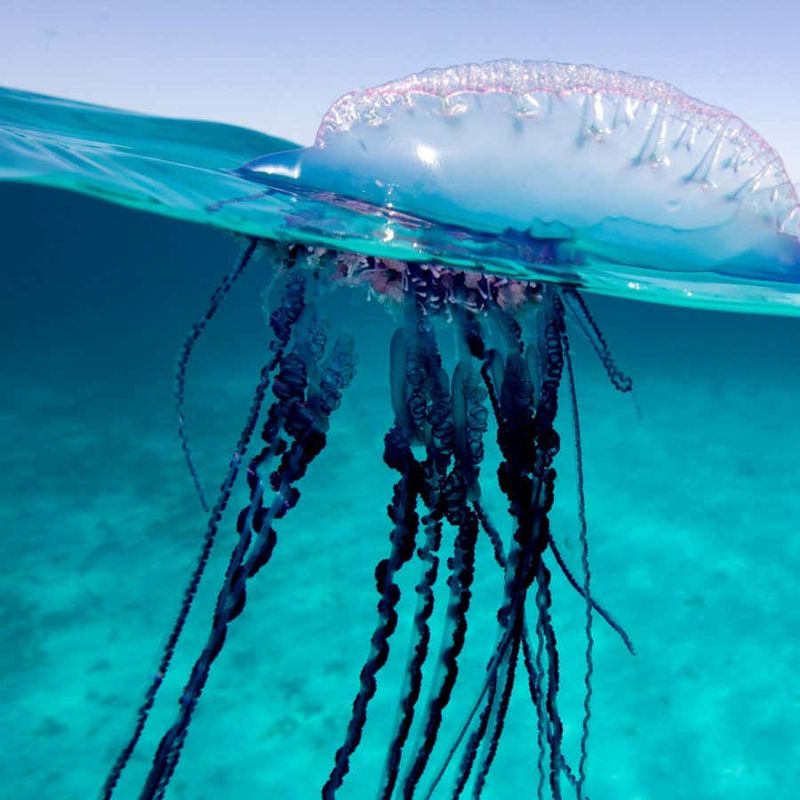
Historically, the Portuguese Man o’ War has been shrouded in myths and misunderstandings. Mariners once feared it as a dangerous jellyfish, unaware of its true nature.
This led to myths of sea monsters and perilous beasts lurking beneath the waves. Over time, scientific exploration unraveled the truth, revealing its siphonophore classification.
This historical journey from myth to understanding is a testament to human curiosity and the quest for knowledge. Today, it remains a symbol of mystery and intrigue in ocean lore.
Symbiotic Relationships
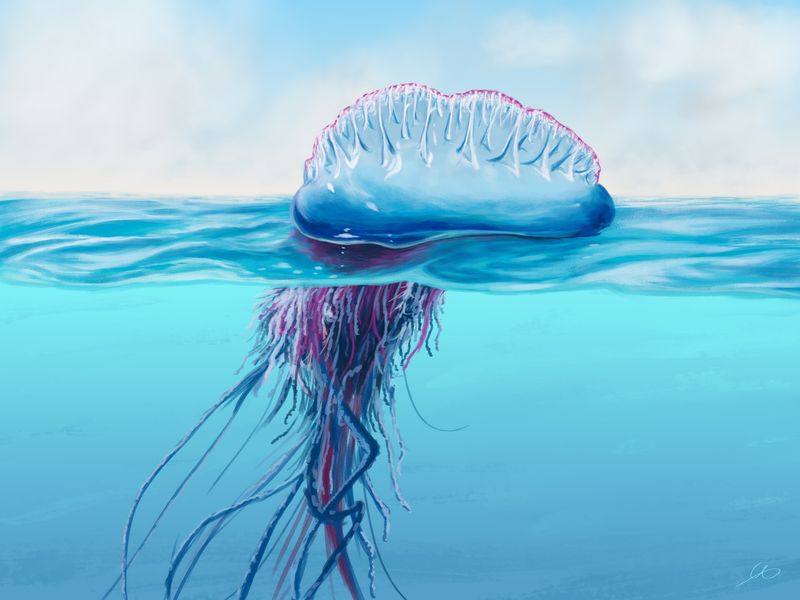
Despite its deadly reputation, the Portuguese Man o’ War engages in symbiotic relationships with certain marine species. Some fish, immune to its venom, find refuge among its tentacles.
These companions gain protection from predators while helping the man o’ war by cleaning its tentacles of parasites. This fascinating relationship exemplifies the complexity of marine ecosystems.
Such intricate interactions demonstrate nature’s ability to adapt and thrive. The delicate balance of mutual benefits reflects the interconnectedness of ocean life and the importance of ecological harmony.
Resilient Survival

The Portuguese Man o’ War showcases remarkable resilience, enduring the harsh conditions of the open ocean. Its gas-filled bladder provides buoyancy and protection from predators.
This adaptation allows it to survive in diverse environments, from calm seas to turbulent waters. Its ability to withstand such extremes highlights the evolutionary success of this unique organism. The man o’ war’s survival strategies offer insight into the adaptability of siphonophores.
This resilience emphasizes the awe-inspiring capabilities of marine life to thrive against the odds.
Influence on Culture
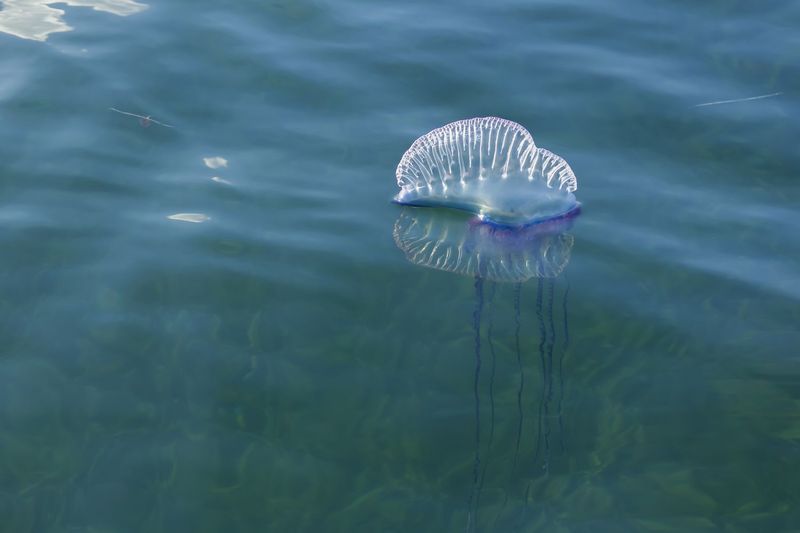
The enigmatic Portuguese Man o’ War has influenced culture and art for centuries. Its mysterious nature and striking appearance have inspired artists and storytellers alike.
In maritime folklore, it symbolizes both beauty and danger, capturing the imagination of seafarers. This cultural impact extends beyond art, influencing scientific research and conservation efforts. The man o’ war’s dual nature as both a marvel and menace continues to captivate.
Its presence in cultural narratives underscores the profound connection between humans and the ocean’s wonders.
Conservation Challenges
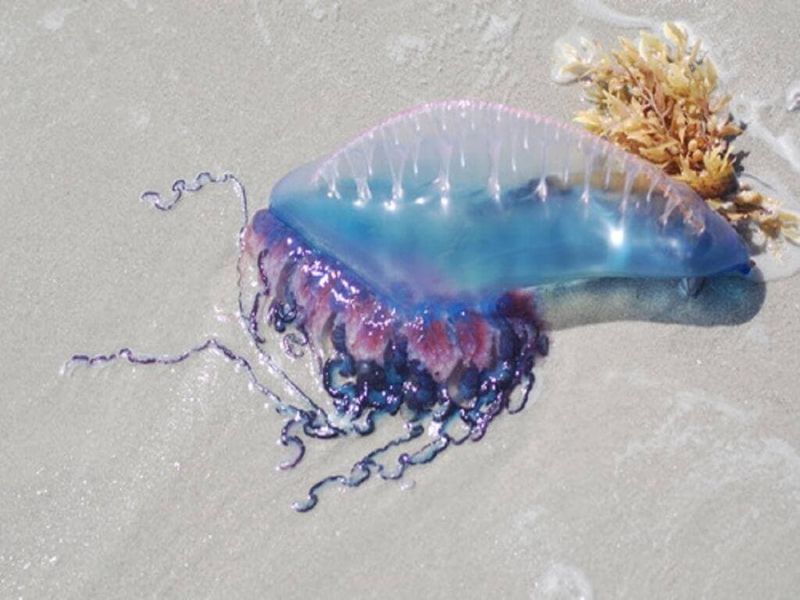
Conservation of the Portuguese Man o’ War poses unique challenges due to its drifting nature. While it plays a vital role in marine ecosystems, its presence on beaches can be hazardous to humans.
Balancing ecological protection with public safety is a delicate task for conservationists. Efforts to educate the public and promote beach safety are crucial.
This involves understanding the ecological importance of the man o’ war while mitigating its risks. Such challenges highlight the need for informed conservation strategies in preserving marine biodiversity.

